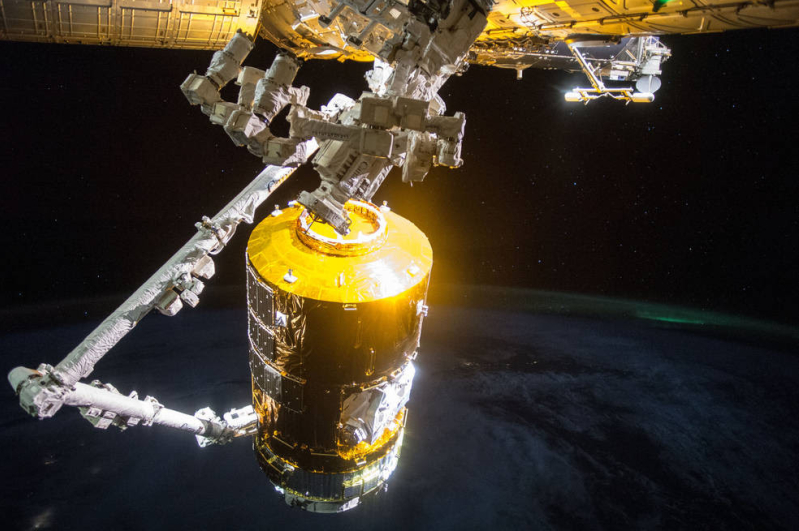
Five weeks after delivering approximately five tons of supplies and experiments to the International Space Station, an unpiloted Japanese cargo ship is scheduled to depart the station Monday, Sept. 28. NASA Television will provide live coverage of the departure beginning at 11 a.m. EDT.
Robotic flight controllers in the Mission Control Center at NASA's Johnson Space Center in Houston will begin preparing the Japan Aerospace Exploration Agency's (JAXA) H-II Transport Vehicle-5 (HTV-5) for unberthing from its port on the station's Harmony module several hours before its release.Expedition 45 Flight Engineer Kimiya Yui of JAXA, backed up by NASA Flight Engineer Kjell Lindgren, will command the station's Canadarm2 robotic arm to release HTV-5, loaded with station trash at about 11:20 a.m. A few hours after its release, the cargo ship will fire its engines to begin a controlled deorbit and entry through Earth's atmosphere, where it will burn up over the Pacific Ocean.
HTV-5 carried a variety of experiments and supplies to the space station, including the NanoRacks External Payload Platform, which can house multiple investigations in the open-space environment of the station, and the CALorimetric Electron Telescope investigation, an astrophysics mission that measures high energy particles to search for dark matter and the origin of cosmic rays.
Also aboard were various nanosatellites used for space research, known as CubeSats, including 14 Planet Labs Dove satellites, which will capture images of Earth for use in humanitarian, environmental and commercial applications. GomSpace GOMX-3 is a small satellite containing three radios. One radio receives beacons from commercial aircraft to improve air traffic monitoring, while the other two test reception and data downlink in the L-band, used by GPS satellites, and the X-band, used by the military and for weather monitoring, air traffic control and other uses.
HTV-5 also delivered materials to support the Twins Study, a compilation of 10 investigations designed to gain broader insights into the subtle effects of and changes that occur in the environment of space as compared to that of Earth by studying two individuals who have the same genetics, but are in different environments. NASA astronaut Scott Kelly is participating from the space station while his identical twin Mark Kelly, a retired astronaut, is participating on Earth. The study includes a suite of integrated human space physiology and cellular-level experiments.
For more information about the International Space Station, visit: http://www.nasa.gov/station







